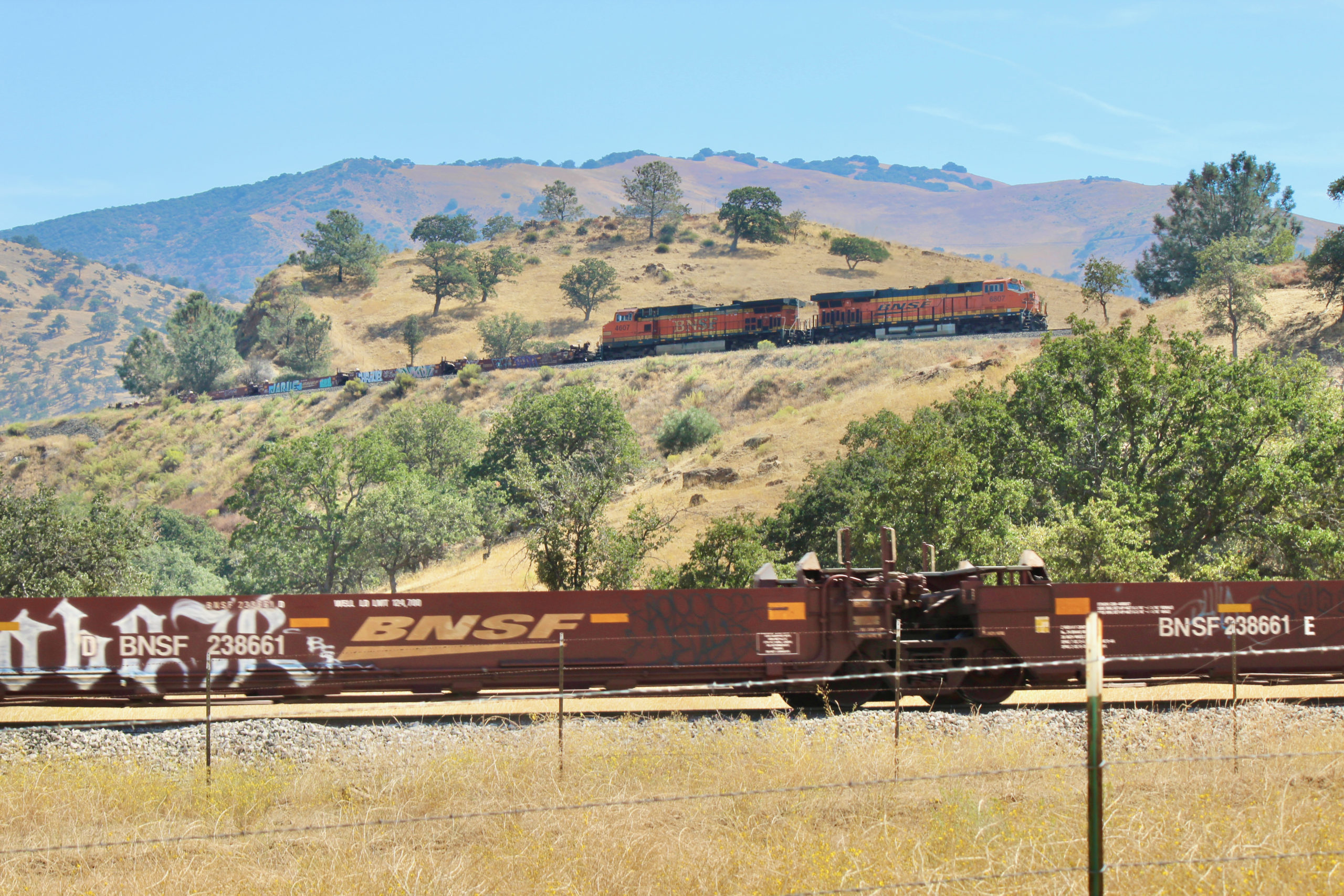BNSF announced its financial results on Feb. 22 alongside its parent, Berkshire Hathaway.
Operating income rose 5.6%, to $7.3 billion, as revenue declined 1.4%, to $23.5 billion for the year, Berkshire Hathaway said in a regulatory filing. Traffic volume was down 4.5% for the year.
BNSF’s operating ratio improved 2.3 points to 64.6%, its best performance since 2015. Expenses declined 4.7%, which BNSF attributed to lower volume-related costs, lower fuel prices, the effects of cost control initiatives, and gains from cutting back on retirement plans.
Volume was down for the year in all four of BNSF’s business groups, partly due to severe winter weather and flooding on parts of the network.
Revenues from consumer products — which includes intermodal and automotive shipments — decreased 0.5%, which BNSF said reflected higher average revenue per car/unit and volume decreases of 4.6%.
“Consumer Products volumes decreased primarily due to lower intermodal volumes, which were driven by moderated demand and the availability of truck capacity as well as lower west coast imports,” BNSF said in its regulatory filing.
Industrial Products revenue increased 1.7% due to higher average revenue per car, partially offset by a volume decrease of 3%.
“Industrial Products volumes decreased primarily due to overall softness in the industrial sector, lower sand volumes, and reduced car loadings due to … challenging weather conditions. This decrease was partially offset by higher demand for petroleum products and liquefied petroleum gas,” BNSF said.
Agricultural Products revenue decreased 0.3% as volumes slumped 5.1%.
“Agricultural Products volumes decreased primarily due to export competition from non-U.S. sources, the impacts of international trade policies, and the aforementioned challenging weather conditions,” BNSF said.
Coal revenue sank 7.4% on a volume decline of 5.3% and lower average revenue per car.
“Coal volumes decreased primarily due to the aforementioned challenging weather conditions as well as the effects of lower natural gas prices,” BNSF said.
For the fourth quarter, BNSF’s net income rose 3.7%, to $1.4 billion, despite a 5.9% decline in revenue, which fell to $5.8 billion.















Gee- And all this without PSR (Positively Stupid Railroading)!!
All of the increase in net was because of rate increases, not volume increases.
BNSF is the largest railroad in the country in terms of carloads. They are in the best position to attract traffic as the economy grows and are doing things such as developing Logistics Parks and Logistics Centers, and identifying “certified rail ready” sites to attract traffic. BNSF has a growth strategy based on capacity improvements and attracting strategy. They earned $5.481 billion of Net Income on $23.515 billion of Revenue, bringing 23.31% of Revenue to the bottom line. Were it not for the flooding alone, revenue would likely have grown. Their strategy is to grow traffic and revenue at faster rate than the rate of expense growth, which over the long term will naturally reduce the operating ratio without cutting service to the bone. BNSF is well-positioned for long-term success.
Still aiming for more and more of less and less until they have all there is of nothing.
And clearly, The Weather.
Michael, except BNSF is the lone holdout on implementing anything that resembles PSR, so in their case it has nothing do with what you said and everything to do with trade with China, industrial slowdown and over capacity in the OTR market.